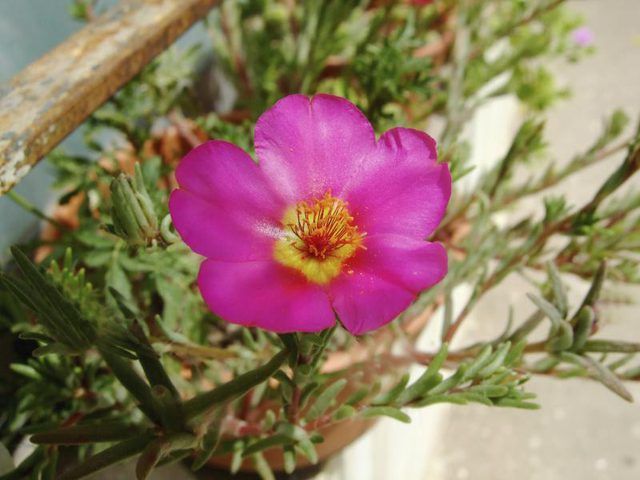Bulbs
Flower Basics
Flower Beds & Specialty Gardens
Flower Garden
Garden Furniture
Garden Gnomes
Garden Seeds
Garden Sheds
Garden Statues
Garden Tools & Supplies
Gardening Basics
Green & Organic
Groundcovers & Vines
Growing Annuals
Growing Basil
Growing Beans
Growing Berries
Growing Blueberries
Growing Cactus
Growing Corn
Growing Cotton
Growing Edibles
Growing Flowers
Growing Garlic
Growing Grapes
Growing Grass
Growing Herbs
Growing Jasmine
Growing Mint
Growing Mushrooms
Orchids
Growing Peanuts
Growing Perennials
Growing Plants
Growing Rosemary
Growing Roses
Growing Strawberries
Growing Sunflowers
Growing Thyme
Growing Tomatoes
Growing Tulips
Growing Vegetables
Herb Basics
Herb Garden
Indoor Growing
Landscaping Basics
Landscaping Patios
Landscaping Plants
Landscaping Shrubs
Landscaping Trees
Landscaping Walks & Pathways
Lawn Basics
Lawn Maintenance
Lawn Mowers
Lawn Ornaments
Lawn Planting
Lawn Tools
Outdoor Growing
Overall Landscape Planning
Pests, Weeds & Problems
Plant Basics
Rock Garden
Rose Garden
Shrubs
Soil
Specialty Gardens
Trees
Vegetable Garden
Yard Maintenance
Do Moss Roses Come Back Every Year?
Do Moss Roses Come Back Every Year?. If you have a sunny spot in the garden that tends to stay dry during the summer, a cheerful little plant called moss rose (Portulaca grandiflora) could be the perfect choice to brighten this area. A semi-succulent, creeping plant, it's named for the roselike appearance of its flowers, that come in pink, red,...

If you have a sunny spot in the garden that tends to stay dry during the summer, a cheerful little plant called moss rose (Portulaca grandiflora) could be the perfect choice to brighten this area. A semi-succulent, creeping plant, it's named for the roselike appearance of its flowers, that come in pink, red, yellow, orange or white. A tough, easy-to-grow plant, moss rose is an annual, but it self-seeds readily and can keep an area filled with colorful flowers year after year.
New Seeds From Old Flowers
Moss rose comes in many different cultivars, some with single flowers and others with extra-showy, double flowers. Flowers on all types grow on the tips on the plant's stems, opening fully in the sun and closing overnight. The flowers also stay closed on overcast days. Grow the plant in a spot with excellent drainage that gets full sun all day to get the most flowers, which will open nonstop from midsummer into fall.
Although moss rose doesn't live through winter and is easily damaged by cold weather, you can promote a self-renewing plot by leaving the flowers on the plant. They will eventually wilt and, over time, petals will fall. Next, the remaining central part of the old flower develops tiny black seeds that drop to the ground when mature.
Seedlings the Following Spring
If you want to see new moss rose seedlings in the same spot next spring, avoid raking or disturbing the soil under the plants, because the seeds need light to germinate. When fall arrives and the plants begin to die back, cut them off carefully just above the soil line to keep the area tidy, but don't pull the plants out by the roots to avoid burying seeds that have dropped. If you live where winter temperatures fall below freezing, the remaining plant parts will die back and dry up before spring arrives.
When weather warms the following spring, keep the soil in the self-seeded area moist. Once moss rose seedlings appear, you can allow them to grow in place or carefully dig them up, adding them to containers or re-locating them in the garden.
Flowers Until Fall
Like many flowering plants, moss rose slows flower production once it produces mature seeds. Eventually, flowering stops and the plant starts to fade near the end of the season. But removing spent flowers as they appear -- called deadheading -- helps keep new flowers coming throughout the season and promotes strong new growth.
You can have the best of both worlds by removing all but a few old flowers from the plant, letting the remaining blooms fade naturally and set seeds. In response, the plant continues making new flower buds, keeping new flowers coming -- but fewer of them -- later in the season. Use sharp shears when deadheading to cut off stem tips that bear flowers, wiping your blade with rubbing alcohol between cuts to discourage spread of plant diseases.
Other Care Issues
Although the moss rose is drought-tolerant, it flowers best when it gets regular water, with about 1 inch of water weekly, including rain, being best. A naturally creeping plant, it can spread to cover an area up to 2 feet wide, developing into a flower-covered, 6-inch-tall mound.
This plant is generally free of pests and diseases, although it might develop root rot if grown in an overly wet area. An affected plant has soft, brown roots and tends to die back, with damage starting at its base. It's best to dig up and throw out any affected plant and re-plant new seedlings in a drier area.